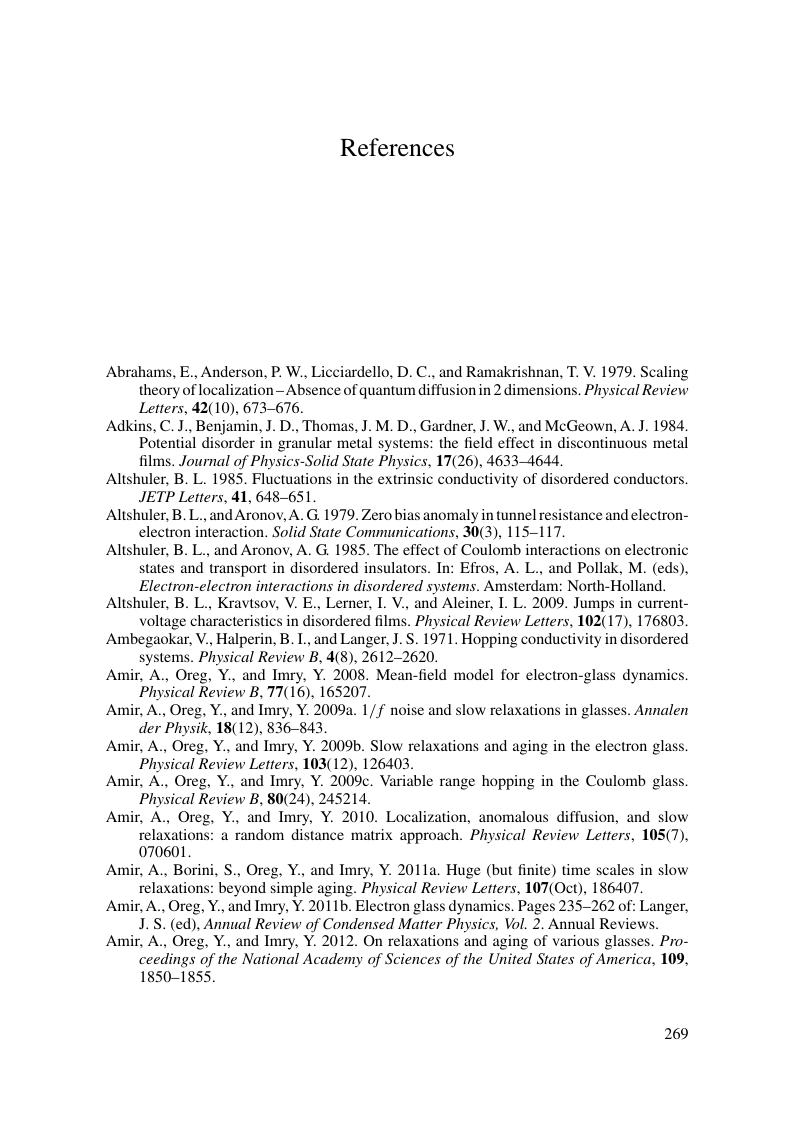Book contents
- Frontmatter
- Contents
- Acknowledgments
- List of symbols
- 1 Introduction
- 2 Disordered electronic systems
- 3 Basics of glasses
- 4 Equilibrium properties of the electron glass
- 5 dc Conductivity
- 6 Other transport properties of electron glasses
- 7 Glassy behavior
- 8 Relationship to other glasses
- 9 Open issues
- References
- Index
- References
References
Published online by Cambridge University Press: 05 January 2013
- Frontmatter
- Contents
- Acknowledgments
- List of symbols
- 1 Introduction
- 2 Disordered electronic systems
- 3 Basics of glasses
- 4 Equilibrium properties of the electron glass
- 5 dc Conductivity
- 6 Other transport properties of electron glasses
- 7 Glassy behavior
- 8 Relationship to other glasses
- 9 Open issues
- References
- Index
- References
Summary

- Type
- Chapter
- Information
- The Electron Glass , pp. 269 - 288Publisher: Cambridge University PressPrint publication year: 2012



